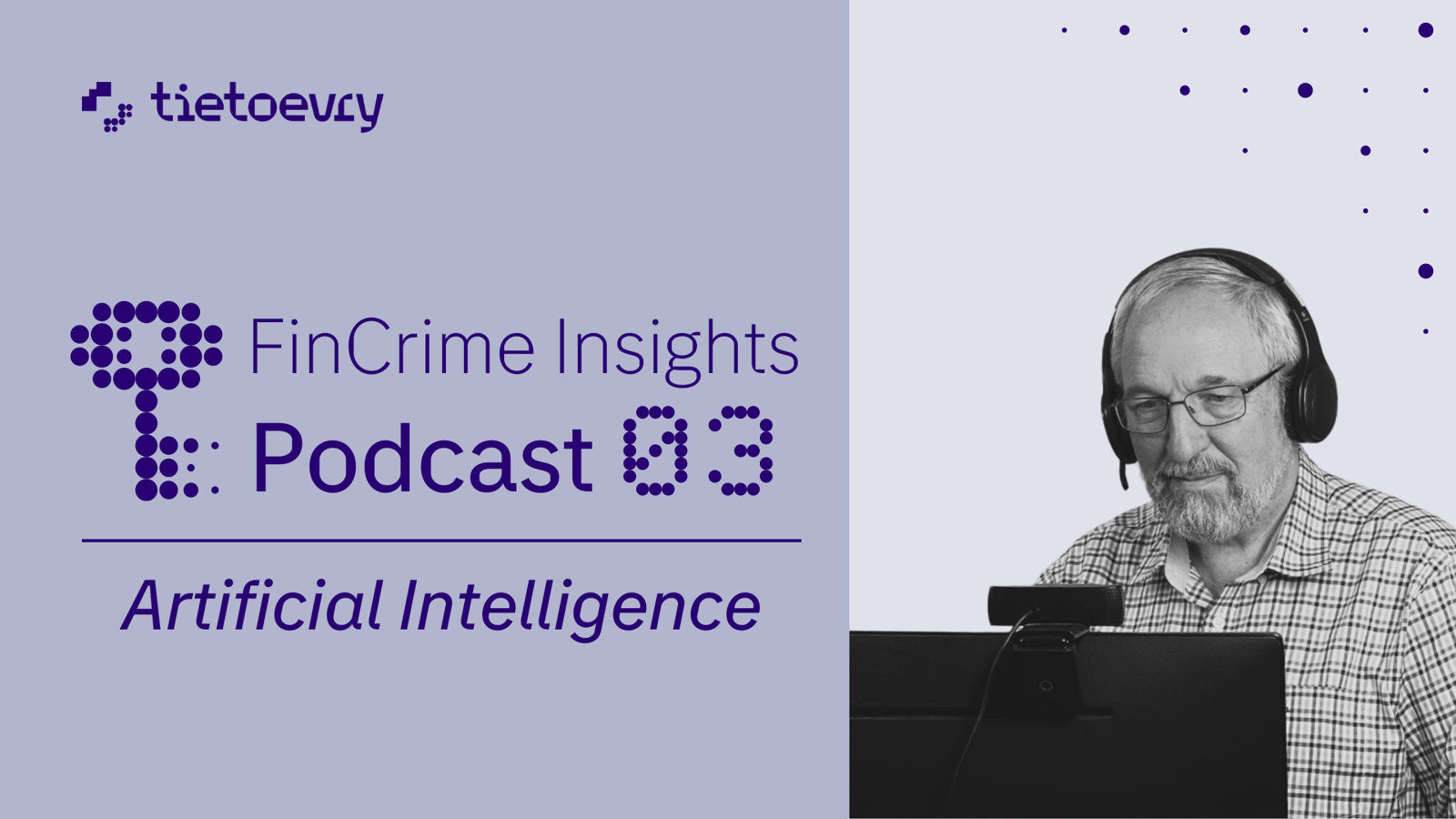
Utilizing Artificial Intelligence in the Fight Against Fraud
FinCrime Insights Podcast #03
Watch all episodes of the FinCrime Insights Podcast hereNikolay Martyushenko has been working with artificial intelligence (AI) for the past eight years. In this episode, he speaks with John Erik Setsaas, Director of Innovation, about various forms of AI and how their combinations – along with human effort – are employed to detect and prevent different types of fraud.
There is a significant difference in how AI is used to detect Money Laundering versus Fraud.
“They are entirely different, if not opposite. Fraud often occurs in isolation when someone gains access to your card and drains it," says Martyushenko, who is the head of Data & AI at Tietoevry Banking, Financial Crime Prevention.
When you realize someone has taken your money, you go to the bank and report the theft.
“Eventually, we learn about all past instances of fraud, allowing us to train our AI models on them to detect new cases of fraud in real-time”.
Detecting Money Laundering is Challenging
On the other hand, a classic money launderer will never report themselves, and only a small percentage of money laundering is discovered. This provides very little training data – and far too little to develop a reliable model.
Therefore, we must find alternative approaches. One method is to use AI to identify patterns in the data without initially linking it to money laundering. By connecting known launderers to others based on their collective behavior patterns, we can identify new launderers and then proceed with human-led investigations to determine their actual activities.
- Nikolay Martyushenko
Humans React Faster
Another difference between fraud and money laundering is that fraud is generally an isolated incident, whereas money laundering always involves more than one bank.
“Hence, we advocate for banks to collaborate with each other and allow us to train on their collective data sets”.
Martyushenko also notes that AI detects many activities that human-made rules miss.
“At the same time, we also know that human-made rules detect a significant amount of fraud that AI does not. AI and human approaches are quite complementary”, he asserts.
Watch and listen to the entire episode on how AI can be used to combat fraud and money laundering here.

Video is blocked
You need to change your cookie settings to watch this video. Click here and allow Targeting cookies.

With over 25 years’ experience in digital identity, John Erik Setsaas is a pioneer in this space. He has deep knowledge in the areas of digital onboarding, authentication, electronic signatures and seals, time stamping and digital identity wallet.
He is a prolific speaker at fintech industry events around the world.





